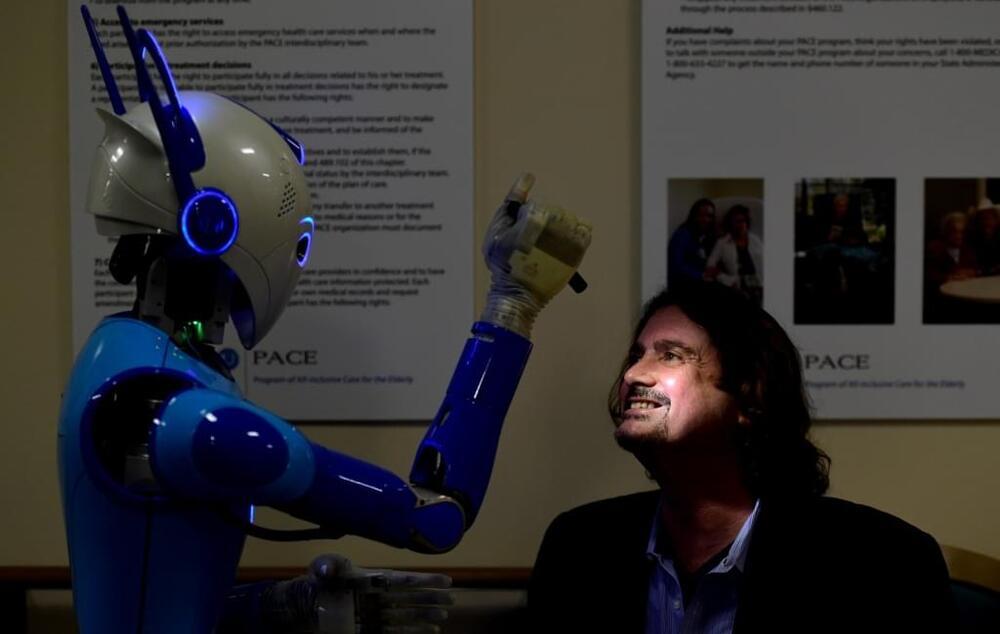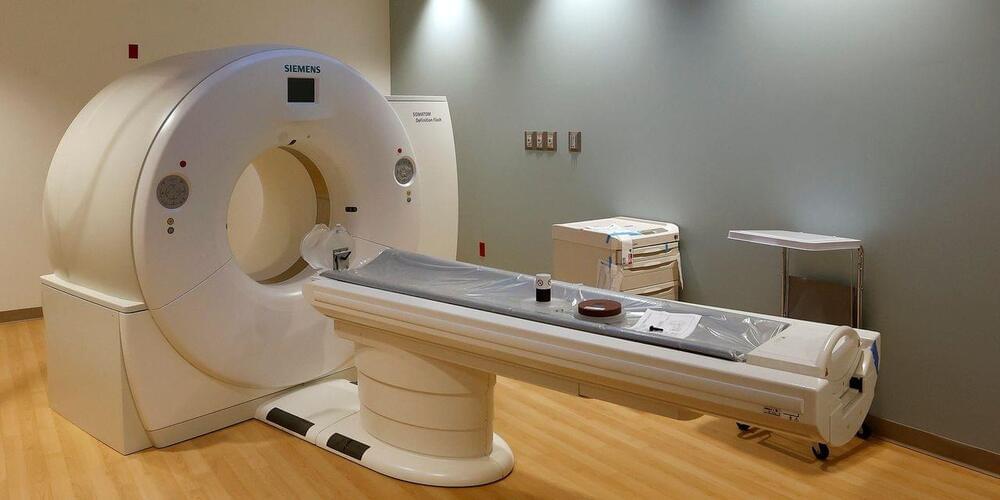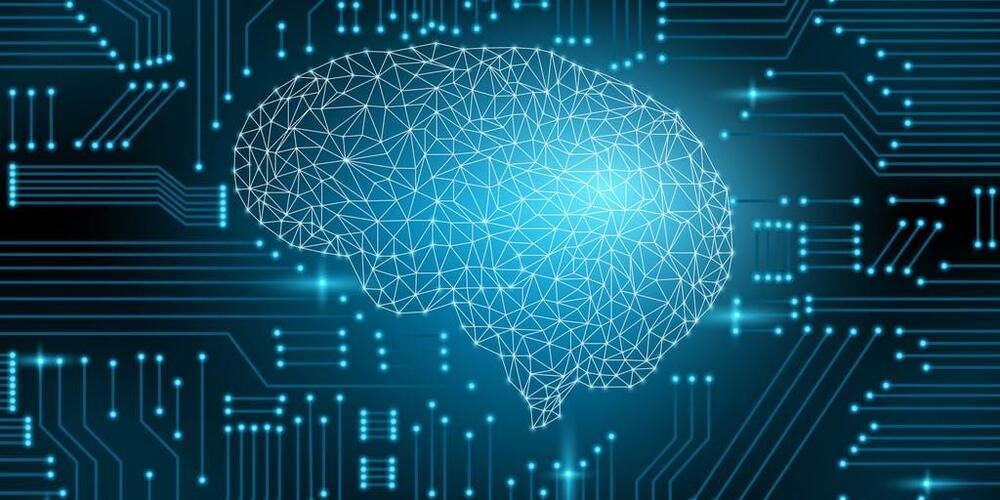The top 10 emerging technologies include self-fertilizing crops, on-demand drug manufacturing, breath-sensing diagnostics and 3D-printed houses. Check the full list of emerging tech.
Category: biotech/medical – Page 1,592

Medical center in Lafayette hosts test run of humanoid robot
TRU Community Care in Lafayette was the host to the unveiling of a brand new technology in the medical field — a humanoid robot that can perform basic medical tasks.
Beyond Imagination, an AI company based out of Colorado Springs, visited the Lafayette hospice center to test out the robot, named BEOMNI.
“We are excited that TRU sees the almost limitless potential of our humanoid robots in health care and has agreed to run this first pilot study with us. We look forward to partnering with them to bring a highly effective solution to market,” said inventor and CEO Dr. Harry Kloor.

Princeton team disables long-targeted gene behind spread of major cancers
The mysterious ways cancer spreads through the body, a process known as metastasis, is what can make it such a difficult enemy to keep at bay. Researchers at Princeton University working in this area have been tugging at a particular thread for more than 15 years, focusing on a single gene central to the ability of most major cancers to metastasize. They’ve now discovered what they describe as a “silver bullet” in the form of a compound that can disable this gene in mice and human tissue, with clinical trials possibly not too far away.
Metastatic cancer is a key focus for researchers and with good reason, as it is actually the primary cause of death from the disease. While surgery or chemotherapy might be effective at eliminating an initial tumor, cells that have broken away can discreetly make their way around the body and give rise to new tumors, months or even years later.
“Metastatic breast cancer causes more than 40,000 deaths every year in the US, and the patients do not respond well to standard treatments, such as chemotherapies, targeted therapies and immunotherapies,” says Minhong Shen, member of the Princeton team behind the new discovery. “Our work identified a series of chemical compounds that could significantly enhance the chemotherapy and immunotherapy response rates in metastatic breast cancer mouse models. These compounds have great therapeutic potential.”


WayRay Holograktor Electric Concept Brings 3D Augmented Reality to the Car
We love the sort of outlandish concept cars that treat themselves as high art, and regret that COVID-19 and the general death of the big auto show is increasingly denying us this pleasure. But here is a spectacular example of the genre to lift the late holiday weekend malaise: meet the WayRay Holograktor.

Benefits Of “Deepfaking” The Mind In Creating Brain-Computer Interfaces
Most times when we think of deepfakes, we think of the myriad negative applications. From pornography to blackmail to politics, deepfakes are a product of machine learning. They create a lie that is so realistic that it is hard to believe it is not the real thing. In a society plagued by fake news, deepfakes have the potential to do a substantial amount of harm.
But a recent team of researchers found another use for deepfakes — to deepfake the mind. And using machine learning to simulate artificial neural data in this way may make a world of difference for those with disabilities.
For people with full body paralysis, the body can seemingly become a prison. Communicating and the simplest of tasks may appear to be an insurmountable challenge. But even if the body is frozen, the mind may be very active. Brain-computer interfaces (BCIs) offer a way for these patients to interact with the world.
BCIs do not rely on muscle or eye movements. Instead, the user is trained to manipulate an object using the power of thought alone. BCIs can allow a fully paralyzed person to operate a wheelchair by just thinking, to move a cursor on a computer screen, or even play pinball by moving the paddles with their mind. BCIs can be freeing for people with this type of paralysis. It can also be used to treat depression or to rehabilitate the brain.
Full Story:

Immune systems and aging clocks
We continue our overview of the Longevity Forum’s Science Summit at Oxford’s Oriel College, part of Longevity Week and hosted by Professor Lynne Cox and Jim Mellon.
Longevity. Technology: Severe community-acquired infections (such as community-acquired pneumonia and COVID-19) are more common in older adults, and overall outcomes are worse. But why as we get older are we more susceptible and can we harness the immune system to improve clinical trajectories in older adults?
Professor Liz Sapey is the Chair of Acute Medicine and an academic acute and respiratory medicine physician at the University of Birmingham and University Hospitals Birmingham NHS Foundation Trust. Sapey presented on what is known about susceptibility to infection as we age.


One of the World’s Best-Funded Edtech Companies Is Investing In AI Moonshots. Can It Work? News
The Indian edtech giant Byju’s keeps getting bigger, having raised more than $4.5 billion since it was founded 10 years ago. This month the company made clear its ambitious research agenda: to achieve the science-fiction dream of building next-generation teaching aids with artificial intelligence.
Specifically, the company announced a new research-and-development hub, with offices in Silicon Valley, London and Bangalore, that will work on applying the latest findings from artificial intelligence and machine learning to new edtech products. The new hub, called Byju’s Lab, will also work on “moonshots” of developing new forms of digital tutoring technology, said Dev Roy, chief innovation and learning officer for BYJU’s, in a recent interview with EdSurge.
“Edtech is one of the slowest adopters of AI so far, compared to some of the other industries out there,” Roy said. “Even in health care, what DeepMind has done with mapping the proteins of DNA—nobody’s doing that in the education sector.”
Gravitas: These robots can produce babies | ‘Xenobots’ capable of ’self-replicating‘
Forget losing your job to robots, Scientists have created robots that can reproduce. ‘Xenobots’ are capable of ‘self-replicating’ themselves. They are made up of stem cells taken from frogs. Astounded? Watch this report by Palki Sharma for the details.
#Gravitas #Robots #Xenobots.
About Channel:
WION-The World is One News, examines global issues with in-depth analysis. We provide much more than the news of the day. Our aim to empower people to explore their world. With our Global headquarters in New Delhi, we bring you news on the hour, by the hour. We deliver information that is not biased. We are journalists who are neutral to the core and non-partisan when it comes to the politics of the world. People are tired of biased reportage and we stand for a globalised united world. So for us the World is truly One.
Please keep discussions on this channel clean and respectful and refrain from using racist or sexist slurs as well as personal insults.
Check out our website: http://www.wionews.com.